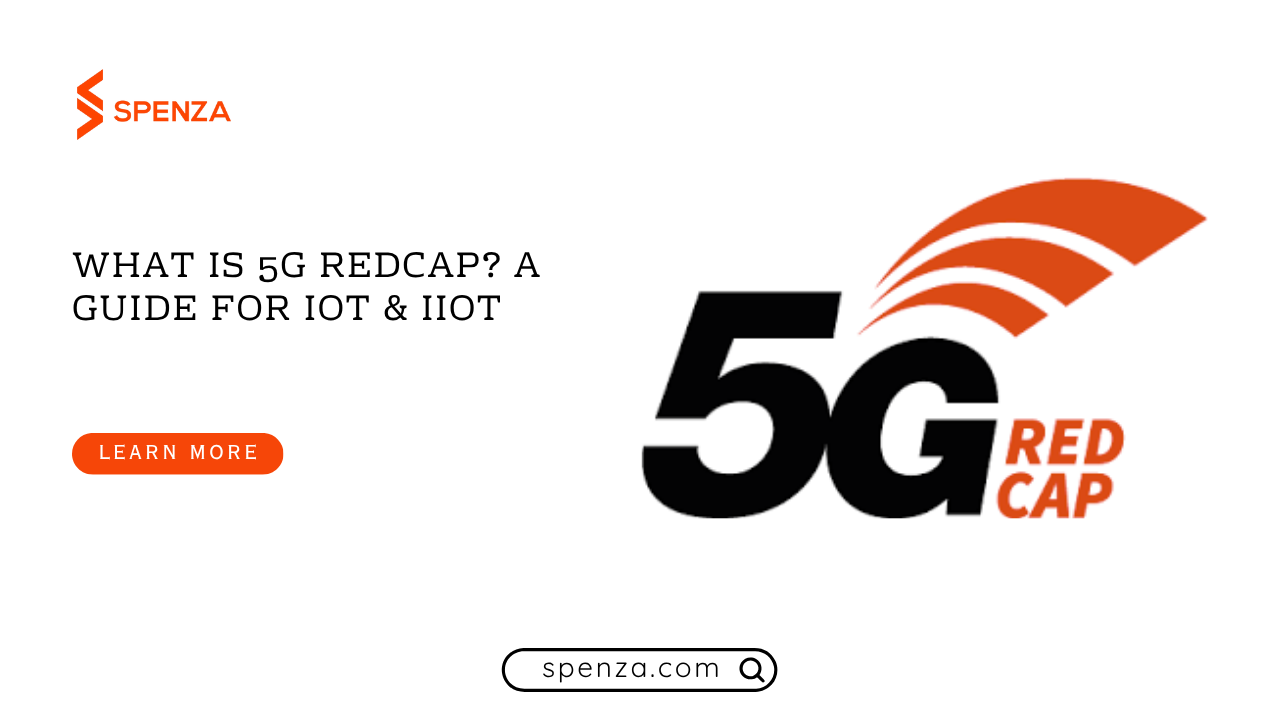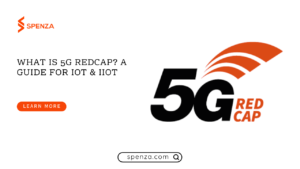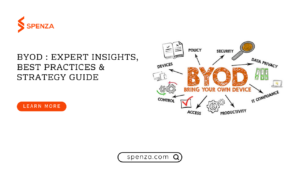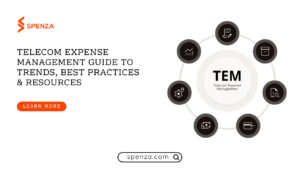
5G RedCap IoT is the purpose-built 5G standard for mid-tier IoT devices. It delivers high speed, low latency, and power efficiency at half the cost of traditional 5G modules, finally bridging the gap between low-power LTE-M and expensive full 5G.
Introduction – The “Missing Middle” of IoT Connectivity Is Finally Here
Why do so many IoT devices still rely on 4G or LPWA in 2025, even though 5G has matured? Because until now, there was no “middle ground”, you either chose ultra low-throughput, low-power networks, or expensive, power-hungry 5G.
In 2024, global cellular IoT connections exceeded 4 billion, with NB-IoT and LTE-M continuing to dominate deployment in many regions
For years, engineers chose between two extremes: cheap, low-power technologies like LTE-M and NB-IoT that offered just kilobits of throughput, or full 5G modules that cost over $100 and drained batteries quickly. In 2024, NB-IoT connections still made up the majority of cellular IoT deployments worldwide, but they couldn’t handle video or fast data exchange. Meanwhile, high-performance 5G modules remained too costly for mass IoT.
Now a purpose-built solution fills that void, 5G RedCap IoT (“Reduced Capability” NR or NR-Light). It’s the just-right connectivity class for devices that need more than LPWAN but don’t need gigabit 5G.
In this blog, you’ll learn what 5G RedCap is, how it compares to LTE-M and full 5G, and why it’s transforming industrial IoT connectivity for the next generation of smart devices.
What Exactly Is 5G RedCap?

Not Just “Lite” 5G
5G RedCap IoT is a specific 5G standard defined in 3GPP Release 17. Instead of stripping features blindly, it was engineered from scratch for low-power industrial IoT and mid-tier devices like smart watches or factory sensors. It keeps the core benefits of 5G NR, standalone architecture, network slicing, and ultra-reliable low-latency support, but reduces hardware complexity drastically.
The Key Specs
| Metric | 5G RedCap IoT | LTE-M | NB-IoT | Full 5G NR |
|---|---|---|---|---|
| Downlink Speed | ≈ 150 Mbps | 1–4 Mbps | < 0.25 Mbps | 1–10 Gbps |
| Uplink Speed | ≈ 120 Mbps | 1 Mbps | < 0.25 Mbps | 1–5 Gbps |
| Latency | < 100 ms | ~50–150 ms | ~500 ms | < 10 ms |
| Bandwidth | 20 MHz (sub-6 GHz) | 1.4 MHz | 200 kHz | 100 MHz + |
| MIMO | 1T1R | 1T1R | 1T1R | 4T4R / 8T8R |
| Typical Module Cost (2025) | ≈ $50 | ≈ $15 | ≈ $8 | ≈ $100 + |
| Battery Life | Up to 10 years | 10+ years | 10+ years | 2–3 years |
Performance tests in 2025 show that 5G RedCap IoT devices reach 150 Mbps downlink and 120 Mbps uplink while keeping latency under 100 ms. That’s up to 20 times faster than LTE-M. At the same time, it uses narrower 20 MHz channels and fewer antennas (1T1R), reducing silicon complexity by ≈ 65 %. This design lowers module costs by half and power use by up to 50 %.
So when we ask what 5G RedCap is, the answer is simple: it is reduced capability NR tailored for massive yet intelligent IoT applications. It delivers fast, reliable connectivity for devices that don’t need gigabit speed but do need modern 5G features. Its balance of speed, cost, and efficiency makes it the sweet spot for the next wave of industrial IoT connectivity.
Transitioning from here, let’s see how it compares to other technologies.
RedCap vs the World: A Head-to-Head Comparison
Decision-makers often ask how 5G RedCap vs LTE-M stacks up in real projects. Let’s break it down.
5G RedCap vs LTE-M
- Throughput and Latency: 5G RedCap IoT delivers 10 – 20 × more bandwidth than LTE-M with latency under 100 ms. LTE-M suits simple telemetry; RedCap supports video feeds or instant machine control.
- Cost and Power: RedCap modules now cost ≈ $50, still 3× LTE-M modules (~$15), yet analysts see a 50 % drop by 2027. That makes RedCap cost-effective for medium-data devices.
- Network Support: Major carriers like AT&T and T-Mobile will enable RedCap nationwide in 2025. LTE-M continues to coexist, but future expansion focuses on RedCap IoT services.
- Battery Life: LTE-M still leads for ultra-low-power use cases. However, RedCap’s enhanced eDRX and PSM extend battery to multi-year levels in sensors transmitting occasionally.
Choose LTE-M for tiny payloads and decade-long batteries. Pick 5G RedCap IoT for smarter devices that need bandwidth without a heavy price tag. This balance makes RedCap the backbone of low-power industrial IoT where LTE-M reaches its limit.
5G RedCap vs Full 5G (eMBB)
Full 5G NR was built for smartphones and immersive media. Its gigabit speed and multi-antenna design add complexity IoT rarely needs. A standard 5G modem costs $100 or more and requires 4×4 MIMO. RedCap reduces that to one antenna and 20 MHz channels, cutting hardware and energy use in half.
If your industrial robots need near-zero latency (< 10 ms), full 5G still wins. For everything else, smart meters, wearables, asset trackers, 5G RedCap IoT delivers plenty of speed at a fractional cost. It’s a measured trade-off that makes business sense.
Top Use Cases: Where Does 5G RedCap Shine?
Now that we’ve compared technologies, let’s explore real applications where 5G RedCap IoT is gaining traction. Each category shows how reduced capability NR translates into value.

1. Industrial IoT (IIoT)
Factories are the first to embrace 5G RedCap IoT. Wireless sensors and actuators on production lines need faster feedback loops than LTE-M allows. RedCap’s sub-100 ms latency enables near real-time control without the need for wired Ethernet.
- Industrial wearables: AR glasses for technicians stream HD video to remote experts. A factory in Germany saw repair times drop 30 % after adopting RedCap IoT wearables.
- Predictive maintenance: High-bandwidth vibration and thermal sensors send continuous data for AI analysis. Each unit uses RedCap to push 120 Mbps uplinks while running on battery for years.
This blend of speed and efficiency redefines industrial IoT connectivity. Many companies are phasing out Cat-1 LTE for RedCap sensors in 2025.
(For a complete look at modern IoT network types, see Spenza’s IoT Connectivity Types Guide 2025.)
2. Smart Grid & Utilities
Energy providers modernize with RedCap modules in transformers and meters. Utilities send real-time diagnostics over private 5G networks to cut downtime. In 2025, several North American utilities test RedCap for substation video surveillance and fast grid balancing.
These are classic RedCap use cases where NB-IoT fails to deliver speed. With uplink over 100 Mbps, a RedCap controller uploads fault data instantly to a cloud dashboard. The same device runs for years using sleep cycles optimized for low-power industrial IoT.
3. Logistics & Asset Tracking
Supply chains need continuous visibility. High-value assets often require photo proof or video verification. RedCap IoT trackers transmit images and sensor logs ten times faster than LTE-M. Battery life remains measured in years, not months.
Fleet operators also adopt RedCap for truck telematics to send sensor streams from engines and dashcams. As full 5G coverage spreads, multi-carrier eSIMs handle seamless handoffs between RedCap and LTE-M zones. Spenza’s IoT Connectivity Strategies 2025 explains why this hybrid approach matters for fleet managers.
4. High-End Consumer Wearables
Wearables are the poster child for 5G RedCap IoT. Smart watches and health monitors gain independent connectivity without pairing to a phone. Average RedCap modems use 50 % less power than full 5G, so battery life matches LTE-M devices.
In 2025, global shipments of RedCap wearables top 15 million units, according to ABI Research. The standard enables VoNR calls and real-time data sync without bulky hardware. Future smart glasses and medical patches will depend on reduced capability NR for fast, lightweight 5G connections.
5. Retail and Payments
Retail IoT devices like POS terminals and kiosks shift to 5G RedCap IoT modules for speed and security. Transaction authorization times drop because latency falls below 100 ms. When combined with multi-network SIM management through Spenza’s platform, retailers avoid single-carrier lock-ins explained in Spenza’s Single-Carrier IoT Risks 2025.
RedCap also powers interactive vending machines that stream ads or video calls for support. That was impossible on LTE-M due to low bandwidth. Now one compact module handles it all.
6. Transportation and Automotive
Connected vehicles generate massive data streams from telematics units, sensors, and dash cameras. 5G RedCap IoT fits mid-tier vehicle systems that need more speed than LTE-M but don’t need full 5G autonomy.
Fleet dashcams send compressed video over RedCap for incident reporting. EV charging stations use it for billing and real-time fault alerts. Analysts forecast 80 million RedCap modules shipped by 2029, with automotive as a key segment.
7. Smart Cities and Surveillance
Municipalities use Red…cities deploy RedCap IoT networks for smart cameras, environmental sensors, and traffic management systems. Video-enabled RedCap devices transmit HD footage in real time using less power and smaller antennas than full 5G modules.
A single RedCap-enabled camera can stream 1080p video using under 20 MHz bandwidth, efficient enough for solar-powered setups. These deployments make smart cities safer and more responsive without raising costs.
Industry Outlook
By 2025, more than 30 operators worldwide will activate 5G RedCap IoT networks, according to the Global Mobile Suppliers Association. AT&T rolls out national RedCap coverage for wearables and industrial IoT. Module prices drop rapidly as mass production scales. ABI Research expects 1 billion RedCap and eRedCap device connections by 2030, replacing legacy LTE IoT categories completely.
5G RedCap IoT sits at the center of every future-ready IoT plan. Whether for predictive maintenance, logistics, or smart infrastructure, it combines speed, cost-efficiency, and long service life in one standard.
(For insights into how 5G transforms enterprise IoT, check Impact of 5G on Enterprise Connectivity.)
Now that we understand its technology and use cases, the next part explores how to deploy RedCap efficiently. Many IoT teams ask: which carrier supports it, and how can we manage it globally without complexity? That’s where Spenza steps in.
Spenza: A Modern MVNE
Adopting 5G RedCap IoT in 2025 brings clear benefits, but also a new layer of operational complexity. IoT product managers often face the same questions:
- Which carriers already support RedCap?
- How can we test devices across regions with different coverage levels?
- How can we manage SIMs, billing, and data usage efficiently?
These questions matter because 5G RedCap IoT depends on 5G Standalone (SA) networks, and not every carrier enables them yet. Enterprises need visibility, control, and flexibility, and that’s where Spenza changes the game.
Spenza isn’t just another telecom service provider. It’s a cloud-native, API-first MVNE designed to power both traditional MVNOs and IoT-focused deployments.
As the world transitions to industrial IoT connectivity driven by RedCap, Spenza delivers the infrastructure that developers, strategists, and operators need to scale confidently. It provides a full suite of telecom-grade systems, integrated SIM provisioning, eSIM management, flexible billing, and real-time analytics, all unified in one intuitive platform.
Here’s how Spenza simplifies RedCap adoption for every IoT project.

1. Future-Proof eSIM and SIM Provisioning
Spenza’s platform fully supports RedCap-enabled SIMs and eSIMs. A single eSIM can hold multiple carrier profiles. That means your IoT devices can automatically connect to the best available network, RedCap where it’s live, LTE-M or 4G elsewhere.
Let’s say you deploy smart meters across North America, Europe, and Asia. Without Spenza, you’d negotiate separate contracts with each carrier and manage different SIM SKUs. With Spenza, you use one global eSIM profile, preloaded with operator credentials across 190+ countries.
If you want to explore connectivity design patterns for multi-carrier IoT systems, Spenza’s IoT Connectivity Strategies 2025 article explains how flexible eSIM architectures future-proof your projects.
2. Transparent Carrier and Coverage Management
Most IoT teams underestimate the difficulty of tracking which regions already support 5G RedCap IoT. Network rollouts vary by operator. Spenza fixes that with coverage transparency.
Through one dashboard, you can view:
- Which carriers provide active RedCap IoT service in your target region
- Real-time data usage per device and per SIM
- Carrier-specific RedCap pricing, latency, and SLA metrics
This “single pane of glass” replaces spreadsheets and guesswork. You can directly compare carriers in different countries, for example, coverage in Virginia vs. Vizag, and make deployment decisions quickly.
The platform also helps you avoid single-carrier dependency, a risk detailed in Single Carrier IoT Risks 2025. Spenza allows automatic fallback between operators, ensuring your RedCap sensors or wearables stay online even if one carrier fails.
3. Simplified Management and Automation
Every IoT deployment eventually scales. Hundreds or thousands of devices go online, and managing connectivity manually becomes impossible.
Spenza’s connectivity management platform centralizes control. Product teams can activate, suspend, or monitor devices using APIs or a visual console. All connections, whether NB-IoT, LTE-M, 4G, or 5G RedCap IoT, appear in one unified view.
If a device switches from LTE-M to RedCap due to coverage changes, you see it instantly. You can automate alerts when a module exceeds data thresholds or when a carrier network drops below expected latency.
Billing is equally customizable. Spenza includes a modular billing engine that adapts to how you sell or monitor services. It supports pay-as-you-go, pooled data, or tiered plans across RedCap and legacy networks.
This is critical because RedCap data consumption sits between low-power IoT and high-bandwidth 5G. Some sensors send a few MB daily, while cameras might use hundreds. Having flexible billing lets you price fairly across device types.
For a breakdown of connectivity cost structures, see IoT Connectivity Cost Guide 2025.
Conclusion: Choosing the Right Tool
Let’s bring it back to the big picture.
5G RedCap IoT finally fills the gap between low-power LTE-M and high-cost 5G. It’s the “missing middle” that engineers waited for, faster, efficient, and affordable.
Here’s the simple decision rule for product teams:
- If your device sends small data bursts occasionally, stick with LTE-M or NB-IoT.
- If your device streams data, video, or needs low-latency feedback, 5G RedCap IoT is the right choice.
- If you require gigabit speed and ultra-low latency (like for autonomous robots), full 5G still applies.
RedCap is not just a technical upgrade, it’s a strategic shift. It gives IoT developers freedom to innovate without worrying about network costs or battery limits.
And with Spenza as your connectivity partner, deployment becomes effortless. You can test, launch, and scale RedCap-enabled products with global reach from day one.
FAQs
As of 2025, RedCap supports up to 150 Mbps downlink and 120 Mbps uplink with latency under 100 milliseconds, fast enough for cameras, wearables, and industrial sensors.
Yes. 5G RedCap IoT uses power-saving features from LTE-M, allowing years of battery life even with higher throughput
5G RedCap modules cost around $50 today, about three times LTE-M, but prices are expected to drop by 50 % by 2027 as adoption scales.
Top applications include industrial automation, smart grids, asset tracking, wearables, retail POS, and video-enabled devices.
Enhanced RedCap (eRedCap) arrives in 2026. It offers 10 Mbps speeds and lower power, making it ideal for replacing LTE Cat-1 devices.
Spenza is an MVNE‑platform (“MVNO‑in‑a‑Box”) that offers ready backend systems, multi‑carrier connectivity, eSIM support, white‑label apps, and payments integration so you can build and scale a branded mobile service quickly.
Ready to explore how 5G RedCap can power your next IoT innovation? Book a free demo with Spenza to learn about its RedCap-ready global connectivity platform.






